We may not have the course you’re looking for. If you enquire or give us a call on +971 8000311193 and speak to our training experts, we may still be able to help with your training requirements.
Training Outcomes Within Your Budget!
We ensure quality, budget-alignment, and timely delivery by our expert instructors.
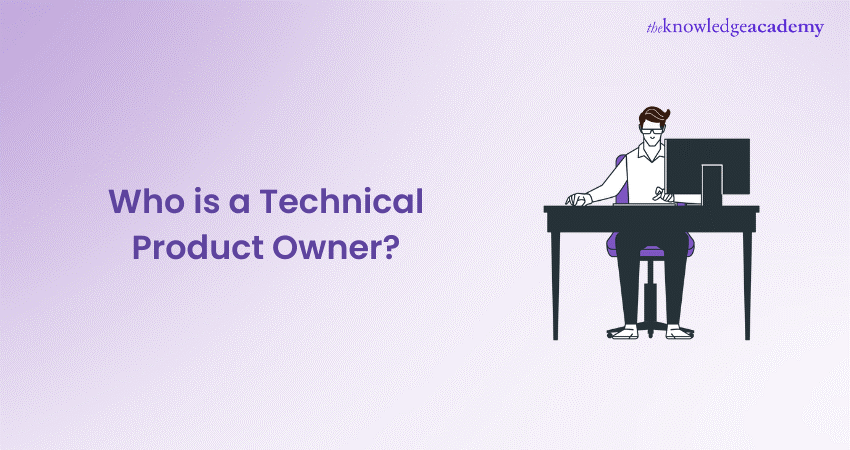
Embarking on the intricate journey of Product Development, the role of a Technical Product Owner emerges as a linchpin, guiding the convergence of technological expertise and strategic vision.
Moreover, in Software Development, a Technical Product Owner orchestrates the seamless integration of technical intricacies and overarching product goals. Explore the role of the Technical Product Owner in the software development process. Learn how they bridge the gap between business goals and technical implementation.
Table of Contents
1) Definition of Technical Product Owner
2) What Does a Technical Product Owner Do?
3) Skills required to become Technical product owner
4) Difference between Product Owner and Technical Product Owner
5) Conclusion
Definition of Technical Product Owner
A Technical Product Owner (TPO) serves as the linchpin between technology and product development, orchestrating a delicate dance that demands both technical acumen and strategic vision. At the core of their responsibilities lies the art of translating complex technical requirements into a coherent product vision.
Additionally, TPOs act as the driving force behind successful project execution, wielding a multifaceted skill set that seamlessly integrates technical prowess with a keen understanding of user needs and market trends.
Anchored in Agile methodologies, TPOs are entrusted with the crucial task of eliciting and prioritising technical requirements, ensuring alignment with overarching product goals. Serving as the bridge between development teams and stakeholders, they navigate the intricate landscape of software development, facilitating effective communication and bridging the gap between technical intricacies and layman comprehension.
More importantly, beyond their role as communication conduits, TPOs are strategic decision-makers, constantly juggling evolving technologies, conflicting priorities, and dynamic market demands. With an unwavering focus on the intersection of technical feasibility and product vision, they guide development teams towards impactful solutions, fostering collaboration and overcoming challenges that define the nexus of technology and product development.
As architects of innovation, TPOs are not merely stakeholders; they are the visionary leaders steering projects toward success in the ever-evolving landscape of technology and product development.

What does a Technical Product Owner do?
A Technical Product Owner (TPO) is a pivotal figure in product development, bridging the gap between technical teams and stakeholders. They define and prioritise technical requirements, ensure alignment with overall product goals, and facilitate effective communication. TPOs play a critical role in steering projects towards success by balancing technical feasibility with product vision.
Here are the various responsibilities of a Technical Product Owner:
1) Technical Resource
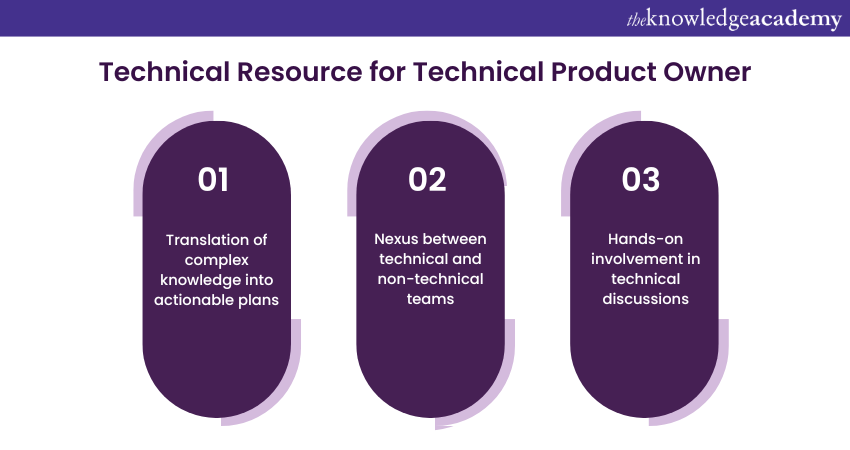
As a technical resource, a Technical Product Owner (TPO) shoulders the responsibility of translating complex technical concepts into actionable plans within the product development lifecycle.
Additionally, they serve as the nexus between technical teams and non-technical stakeholders, articulating requirements and ensuring alignment with overarching product goals. TPOs bring profound technical expertise to the table, guiding development teams in making informed decisions and navigating challenges.
Furthermore, their role extends beyond conventional product management, encompassing hands-on involvement in technical discussions, architecture considerations, and sprint planning. With an acute understanding of technological advancements and happenings, TPOs play a pivotal role in defining and prioritising technical tasks.
These practices help in influencing the trajectory of the project. In essence, they are not just conduits for communication but essential architects, leveraging their technical prowess to drive successful product outcomes.
2) Technical Advisor
In the capacity of a Technical Advisor, a Technical Product Owner (TPO) assumes the crucial role of guiding the product development journey with a lens focused on technical excellence. Drawing upon their deep technical proficiency, TPOs provide invaluable insights and recommendations to development teams, ensuring alignment with industry best practices and emerging technologies.
Additionally, they act as mentors, offering expertise in architecture, design decisions, and technological frameworks, contributing to the overall robustness of the product. TPOs not only shape the technical direction of projects but also serve as catalysts for innovation, advising on the adoption of cutting-edge solutions that align with the long-term vision.
More importantly, by acting as the technical compass, TPOs elevate the quality and efficiency of development processes, fostering a culture of continuous improvement and technical excellence within the product development ecosystem.
Embrace change and collaborate with customers by signing up for our Agile Project Management Foundation & Practitioner (AgilePM®) Course now!
3) Customer Liaison
As a Customer Liaison, the role of a Technical Product Owner (TPO) extends beyond technical realms to ensure seamless communication between development teams and end-users. TPOs leverage their technical acumen to comprehend customer needs and expectations, translating them into actionable requirements for development.
Additionally, they serve as advocates for the customer within the technical domain, prioritising features and functionalities that align with user priorities. By maintaining a constant feedback loop, TPOs bridge the gap between customer expectations and technical implementation, facilitating a user-centric approach to product development. Their responsibility involves not only understanding the market industry but also conveying technical complexities in a user-friendly manner to stakeholders.
Moreover, TPOs, in this role, play a pivotal part in ensuring that the final product not only meets technical standards but also delights and satisfies the end-users, fostering long-term customer satisfaction and loyalty.
Ready to lead and drive success? Enroll in our Change Management Certification program to gain the skills and credentials you need.
4) Relationship between the Product Owner and Scrum Team
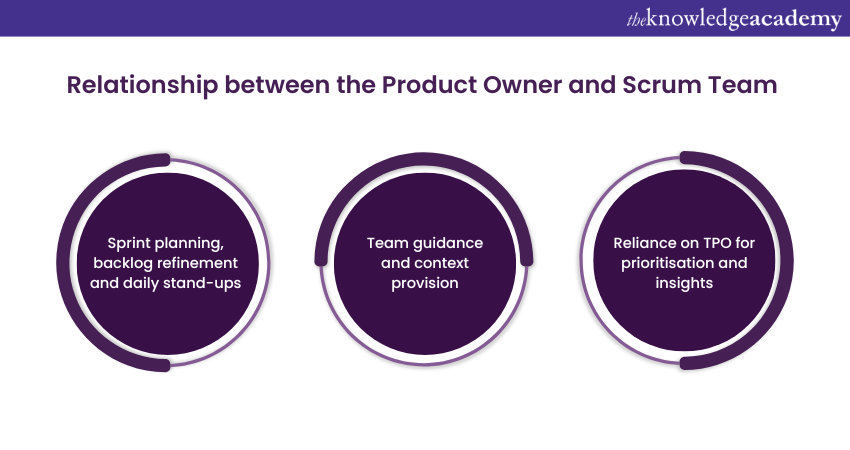
The relationship between a Technical Product Owner (TPO) and a Scrum Team is symbiotic, founded on collaboration and shared goals within the Agile framework. TPOs act as the voice of the customer, steering the product vision, and articulating technical requirements.
They also collaborate closely with the Scrum Team, participating in sprint planning, backlog refinement, and daily stand-ups. Through continuous communication, TPOs guide the team, providing context on user needs and market trends.
Simultaneously, the Scrum Team relies on the TPO for clear prioritisation, technical insights, and decision-making that aligns with the product roadmap. This relationship thrives on transparency and adaptability, essential components of the Agile methodology.
More importantly, as the Scrum Team delivers increments, the TPO provides feedback, fostering an iterative cycle that promotes responsiveness to changing requirements, ensuring the end product meets both technical standards and user expectations.
5) System care and backend infrastructure control
The role of a Technical Product Owner (TPO) in system care and backend infrastructure control is instrumental in ensuring the robustness and efficiency of the technical foundation supporting a product. TPOs take charge of system maintenance, oversee updates and patches, and address technical debt to enhance system reliability.
Additionally, they collaborate closely with backend development teams, defining and prioritising tasks related to infrastructure improvements, scalability, and performance optimisation. TPOs play a strategic role in architectural decisions, ensuring the backend aligns with the overall product vision and goals.
Moreover, by staying abreast of emerging technologies, they guide the integration of cutting-edge solutions to enhance the system's capabilities. In essence, the TPO's involvement in system care and backend infrastructure control is pivotal for maintaining a resilient and scalable technical backbone that not only meets current needs but is well-positioned for future growth and innovation.
Manage your projects effectively by signing up for our SAFe Agile Product Management Training now!
Skills required to become a Technical Product Owner
Becoming a successful Technical Product Owner requires professionals to possess a certain set of skills, which are described in-depth as follows:
1) Technical skills
Technical Product Owners (TPOs) are indispensable in merging technical expertise with product vision. Here's a point-based breakdown of the diverse technical skills required for someone aspiring to become a proficient Technical Product Owner:
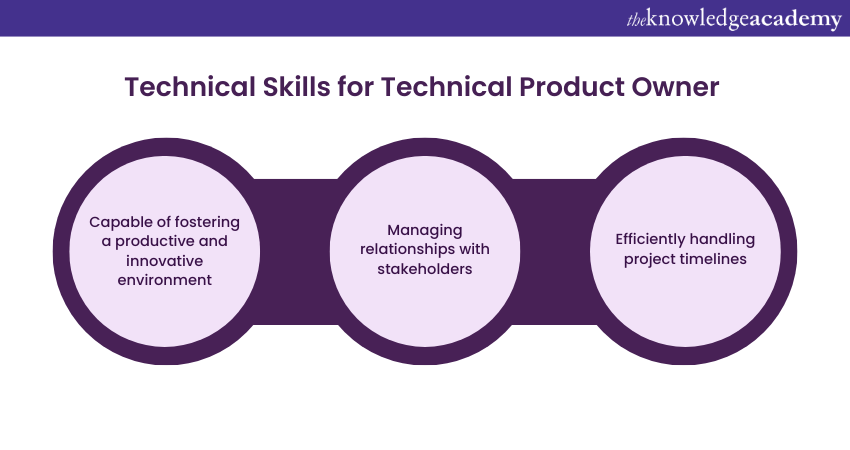
a) Proficiency in Software Development: Mastery of at least one programming language and a thorough understanding of the Software Development Life Cycle.
b) User Interface (UI) and User Experience (UX) Design: Ability to create intuitive and visually appealing UI/UX designs and a good knowledge of design principles and user-centric methodologies.
c) Agile Scrum methodology: Expertise in Agile principles and Scrum framework and proficiency in sprint planning, backlog grooming, and facilitating Scrum ceremonies.
d) Software Engineering: They must have comprehensive knowledge of software engineering principles and an understanding of architectural patterns and design principles.
e) Creation and management of User Stories: Skill in crafting clear, concise, and actionable user stories along with the prioritisation of user stories based on business value.
f) Coding: They must have the basic coding skills to understand development challenges as well as the ability to collaborate effectively with development teams.
f) Web designing: They need to be proficient in HTML, CSS, and other web design technologies and extensively understand responsive design principles.
g) Technical Product Development: They must be experienced in end-to-end technical product development and demonstrate the ability to align technical decisions with overall product goals.
h) Expertise in using Software Development applications and tools: Familiarity with version control systems (e.g., Git) and proficiency in Project Management tools (e.g., Jira) and collaboration platforms.
2) Analytical skills
A Technical Product Owner (TPO) must possess a nuanced set of analytical skills to navigate the intricate intersection of technology and product development effectively.
a) Data analysis: Proficiency in analysing relevant data to derive actionable insights and the ability to use data-driven decision-making to refine product strategies.
b) Market analysis: A keen understanding of market trends, competitor analysis, and industry dynamics and the capability to identify opportunities and threats to the product.
c) User behaviour analysis: Skilled at interpreting user feedback and behaviour analytics and the utilisation of user insights to inform product enhancements.
d) Risk assessment: Identifying potential risks, mitigating strategies and evaluating the impact of technical decisions on project timelines and outcomes.
e) Financial analysis: Budgeting and financial analysis for technical aspects of the product. Ensuring cost-effectiveness and resource optimisation.
3) Project management skills
Effective project management skills are integral for a Technical Product Owner (TPO) to orchestrate the seamless integration of technology and product development:
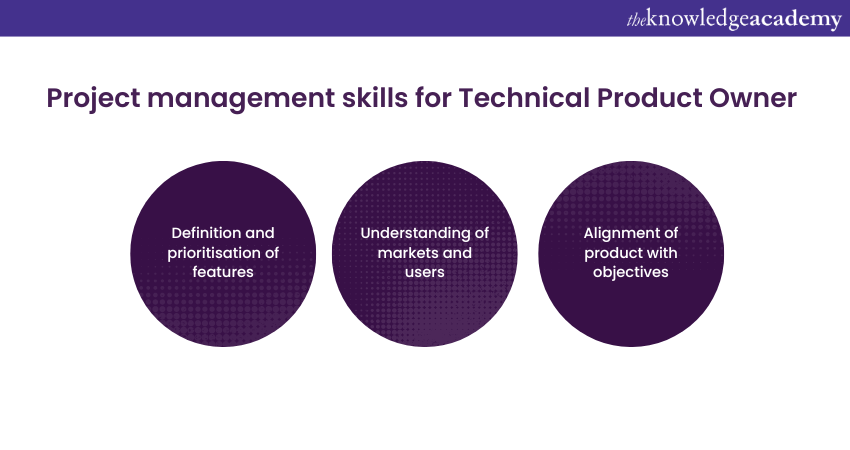
a) Communication and collaboration: Facilitating clear communication between technical teams, stakeholders, and other departments. They must also be capable of fostering a collaborative environment to enhance productivity and innovation.
b) Stakeholder Management: Building and managing relationships with stakeholders to align expectations and priorities, advocating for the product and ensuring stakeholder satisfaction.
c) Time Management: Efficiently managing project timelines, ensuring timely delivery and, prioritising tasks and adapting to evolving project needs.
d) Risk Management: Identifying potential risks, developing mitigation strategies and proactively addressing challenges to prevent project delays.
e) Agile methodologies: Expertise in Agile principles, especially Scrum, for iterative and adaptive project management. They also need to conduct sprint planning, backlog refinement, and retrospectives effectively.
4) Communication skills
Exemplary communication skills are paramount for a Technical Product Owner (TPO) who navigates the complex terrain of technology and product development.
a) Clear articulation: Communicating technical concepts in a clear and understandable manner to diverse stakeholders.
b) Active listening: Attentively understanding the concerns and feedback of both technical teams and non-technical stakeholders.
c) Stakeholder alignment: Aligning technical decisions with overarching business goals, ensuring a shared understanding among all stakeholders.
d) Effective presentation: Presenting technical information concisely and persuasively, making complex ideas accessible.
e) Negotiation skills: Negotiating priorities and compromises between technical feasibility and business requirements.
5) Problem-solving skills
Technical Product Owners (TPOs) must wield strong problem-solving skills to navigate the challenges inherent in product development and technology integration.
a) Analytical thinking: Analysing complex technical issues and breaking them down into manageable components.
b) Proactive troubleshooting: Anticipating potential roadblocks and proactively addressing them to maintain project momentum.
c) Decision-making: Making informed decisions based on data, technical feasibility, and alignment with overall project goals.
d) Innovative solutions: Proposing and implementing innovative technical solutions to enhance product functionality.
e) Adaptability: Adapting to changing project requirements and evolving technological landscapes.
Difference between Product Owner and Technical Product Owner
In Product Development, the distinctions between a Product Owner (PO) and a Technical Product Owner (TPO) are crucial, each playing distinct roles in steering projects towards success. Here are the various parameters to help you better understand the differences between both roles:
1) Not all product owners require technical expertise to perform their duties.
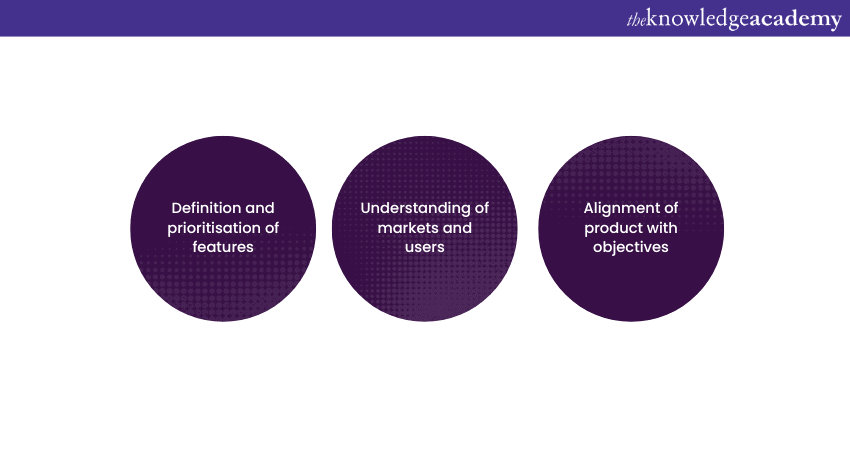
Traditional Product Owners primarily focus on defining and prioritising features based on market needs and user feedback. Unlike TPOs, they may not necessarily possess in-depth technical expertise.
Moreover, their strength lies in market understanding, user advocacy, and aligning the product roadmap with business objectives. This allows them to concentrate on high-level product strategy and user experience without delving deeply into technical intricacies.
2) Technical aspects of product development are managed by technical product owners.
Technical Product Owners are equipped with a strong technical background, allowing them to bridge the gap between development teams and other stakeholders. They are responsible for translating technical requirements into actionable plans, aligning them with the overall product vision.
Moreover, TPOs ensure that the technical aspects of product development, such as coding standards, system architecture, and scalability, meet the required standards. Their expertise enables effective communication with developers, ensuring that technical decisions align with both project goals and user expectations.
3) Technical product owner is straightforward.
The role of a Technical Product Owner is more straightforward in its fusion of technical acumen and product vision. TPOs are direct contributors to technical decision-making, allowing for a seamless integration of technology within the product development lifecycle.
More importantly, their responsibilities include ensuring that the technical solutions proposed align with the overall product vision and can be effectively implemented by the development team.
4) Teams may need to create a new role for large client projects.
In the context of large client projects, teams often find it necessary to create a distinct role for Technical Product Owners. The complexity and scale of such projects demand a specialised focus on the technical intricacies involved.
Moreover, while a traditional Product Owner may oversee the broader product strategy and client relationship, a dedicated Technical Product Owner can navigate the technical challenges, ensuring that the development team adheres to industry best practices, stays on the cutting edge of technology, and delivers a product that meets both client and technical requirements.
Master the concept of Scrum to deliver the best, by signing up for our Scrum Product Owner Certification now!
Conclusion
In conclusion, the role of a Technical Product Owner stands as a pivotal link in the chain of product development, seamlessly combining technical prowess with strategic vision. Whether navigating complex technical challenges or aligning projects with market demands, the indispensability of a proficient Technical Product Owner remains unparalleled.
Frequently Asked Questions

A successful Technical Product Owner needs a robust set of technical skills, including proficiency in software development, understanding of user interface (UI) and user experience (UX) design, expertise in Agile methodologies, coding capabilities, knowledge of software engineering principles, proficiency in creating and managing user stories, web designing skills, and familiarity with technical product development. More importantly, these skills empower them to effectively communicate with development teams, make informed decisions, and align technical aspects with overarching product goals in the dynamic landscape of technology and product development.

A Technical Product Owner balances technical requirements with product goals by fostering a strategic alignment between the two. They possess a deep understanding of both the technical landscape and overarching product vision. Through clear communication, prioritisation of technical tasks, and informed decision-making, Technical Product Owners ensure that the technical aspects of product development harmoniously contribute to achieving broader product objectives.

The Knowledge Academy takes global learning to new heights, offering over 30,000 online courses across 490+ locations in 220 countries. This expansive reach ensures accessibility and convenience for learners worldwide.
Alongside our diverse Online Course Catalogue, encompassing 17 major categories, we go the extra mile by providing a plethora of free educational Online Resources like News updates, Blogs, videos, webinars, and interview questions. Tailoring learning experiences further, professionals can maximise value with customisable Course Bundles of TKA.

The Knowledge Academy offers various PRINCE2 courses, including PRINCE2 Foundation, Practitioner, and Agile. These courses cater to different skill levels, providing comprehensive insights into Project Management methodologies.
Our Project Management blogs covers a range of topics related to PRINCE2, offering valuable resources, best practices, and industry insights. Whether you are a beginner or looking to advance your Project Management skills, The Knowledge Academy's diverse courses and informative blogs have you covered.

The Knowledge Academy’s Knowledge Pass, a prepaid voucher, adds another layer of flexibility, allowing course bookings over a 12-month period. Join us on a journey where education knows no bounds.
Upcoming Project Management Resources Batches & Dates
Date
 Scrum Master Certification
Scrum Master Certification
Thu 9th Jan 2025
Thu 16th Jan 2025
Thu 23rd Jan 2025
Thu 30th Jan 2025
Thu 6th Feb 2025
Thu 13th Feb 2025
Thu 20th Feb 2025
Thu 27th Feb 2025
Thu 6th Mar 2025
Thu 13th Mar 2025
Thu 20th Mar 2025
Thu 27th Mar 2025
Thu 3rd Apr 2025
Thu 1st May 2025
Thu 22nd May 2025
Thu 5th Jun 2025
Thu 19th Jun 2025
Thu 3rd Jul 2025
Thu 17th Jul 2025
Thu 31st Jul 2025
Thu 14th Aug 2025
Thu 11th Sep 2025
Thu 25th Sep 2025
Thu 2nd Oct 2025
Thu 9th Oct 2025
Thu 16th Oct 2025
Thu 23rd Oct 2025
Thu 30th Oct 2025
Thu 6th Nov 2025
Thu 13th Nov 2025
Thu 20th Nov 2025
Thu 27th Nov 2025
Thu 4th Dec 2025
Thu 11th Dec 2025
Thu 18th Dec 2025







 Top Rated Course
Top Rated Course


 If you wish to make any changes to your course, please
If you wish to make any changes to your course, please


